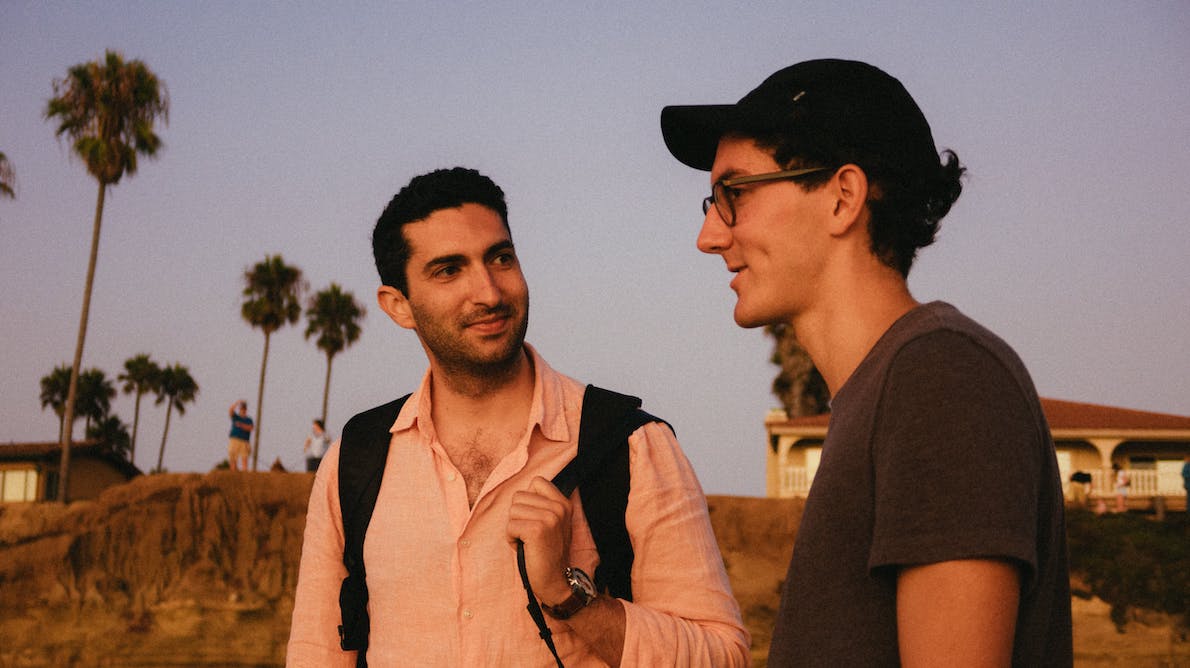
Author Scott Shigeoka shows us how we can harness the power of curiosity and reap the rewards
Curiosity is defined as the ‘desire to know’, but many people don’t realise it’s on a spectrum – ranging from shallow to deep. What you may be more familiar with in daily life is shallow curiosity, the kind of questioning that helps us to collect data and information. We use it to learn facts.
Deep curiosity, on the other hand, invites us to go beneath the surface. It’s not just about facts, but about unearthing stories. When we use it to learn about other people, we get a rich insight into their core values and life experiences. Instead of a simple question like “What do you do for work?”, we ask: “What kind of work makes you come alive, and why?”

One type of curiosity is not necessarily better than the other, they’re just different – with benefits and learnings from both, but which you use might depend on the situation. You wouldn’t out of the blue ask a recently hired colleague: “What’s your biggest childhood trauma?” While some of us might be on board with sharing so openly, others may not find the question appropriate – especially before trust and intimacy have been built. However, shallow curiosity can be a gateway to deeper unknowns. So, perhaps it’s time to get curious about how you can harness curiosity’s power…
Curiosity offers a myriad of benefits. People with higher levels of curiosity tend to be happier, with research in the Journal of Personality Assessment showing it’s associated with lower levels of anxiety, better life satisfaction, and greater psychological wellbeing. It also strengthens our relationships – whether with our romantic partners, children, colleagues, friends, or strangers. A study in the Journal of Social and Clinical Psychology found that when people show genuine curiosity towards another person, they’re rated as warmer and more attractive. It creates that ‘give-and-take spiral’ we’re all familiar with: when we ask questions, others are more likely to return the favour.
While curiosity is usually framed as a way to learn about what’s outside of ourselves – such as better understanding someone – it can actually be directed in other ways, too. It helps us understand ourselves, and reflect on our beliefs, desires, or needs. It can even be directed to explore what’s beyond the physical world.
In my book, SEEK: How Curiosity Can Transform Your Life and Change the World, I talk about the three cardinal directions of deep curiosity, which can be a helpful tool that encourages us to be more intentional about where we’re focusing it. The three directions are:
-
Inward: Curiosity towards what’s inside of us (emotions, values, past traumas, or beliefs)
-
Outward: Curiosity towards what’s outside of us (other people, the planet, culture, or systems)
-
Beyond: Curiosity towards what’s beyond us (greater meaning, the divine, or consciousness)
Inward
Inward curiosity strengthens our relationship with ourselves, and allows us to connect with the emotional landscape of our inner world. As a child, this manifests with primal and physical needs like: ‘Am I hungry?’ During puberty, we may have feelings of attraction, and ask ourselves, ‘Why does no one get me?’ This exploration of our inner world is what a therapist might guide us to do during a session.
The world is fast-paced and full of distractions, so practising inward curiosity helps us to focus on what’s truly important in our lives, like what we need or want, who or what to prioritise, and how to spend our time. We ask ourselves questions like: ‘What does a healthy living situation look like for me? How do I want to feel in my relationship? Who do I flourish around?’

Directing our curiosity inward is often done through behaviours like reflection, mindfulness, and paying attention to the sensations in our bodies. When we don’t direct curiosity towards ourselves, we can fuel unhealthy patterns like self-sacrifice or people pleasing – over-focusing on what or who is around us at the expense of our own health and happiness. That’s why directing curiosity towards our internal world is critical to better understand the ones outside of us, and it’s the place I tell people to start at if they want to enhance their relationships with others.
Outward
Outward curiosity is what most people commonly think of when they imagine curiosity: the pursuit of understanding the people and the world around you. Our ancestors used it to ask questions like: ‘Is there water on the other side of that mountain? What is that large predator that’s running toward me? Will this person keep our group safe?’
Today, this kind of curiosity allows us to empathise with others, especially those outside of our social circle. We become better able to understand those with lives, experiences, and worldviews different than our own. Next time you talk to a stranger, try engaging with them on a personal level (respectfully, of course) and showing them that you are interested in what they have to say.
We also direct our curiosity outward to relate to the natural world, enhancing our connection to the land and animals. This direction also aids us with understanding cultures or systems that we’re immersed in, such as when we travel to another country.

Outward curiosity can be a solo activity – when you meet someone you’re attracted to, you might get curious about how they like to be loved, or what their past relationships were like. But outward curiosity also thrives when done with others – like exploring social topics in a group through a book club.
If we don’t direct our curiosity outward, we can become insular and self-focused, which can breed narcissistic or egotistical behaviours, decaying our ability to be sensitive and empathetic to the wants and needs of others. Outward curiosity reduces the risk of clinging on to a more individualistic mindset, and helps us adopt a more collective and harmonic one.
Beyond
Humans have long asked questions like: ‘What happens when we die? Is there a God? What are my spiritual beliefs?’ Whether you’re religious or not, you can still use your curiosity in this direction. It might look like exploring life’s meaning, such as asking yourself: ‘What does it mean to be human? What is consciousness? What will my legacy be when I die?’
When we direct our curiosity toward the beyond, our aim is to connect with something bigger than ourselves. Exploring this can help you to feel more grounded in the present, and strengthen the connections you have to yourself, as well as to the people and world around you.
All three directions – inward, outward, and beyond – intersect with each other. If you recently broke up with someone, you might ask a close friend about how they navigated their separation. You’d learn more about them through this conversation (outward), yet you might also uncover insights that help you to think through your own romantic relationship (inward). As you reflect on how you were parented as a child (inward), it might tell you more about how you’d like to parent your own children (outward) or future children (beyond). Getting curious about God or consciousness (beyond) could shape the way you relate to those around you (outward). The ways the directions intersect go on and on.

All three directions are equally important, because they each offer a critical vantage point to our relationships, our work, and our life, which is why it’s important to think about which ones you tend to gravitate towards the most, or least. Maybe you’re introspective and thrive with inward curiosity. Or perhaps you’re the opposite: constantly interested in others and the world around you, but avoiding what’s going on inside of you.
People who deliberately use all three directions are true seekers, because they stay curious about themselves, the world around them, and what’s beyond. They also reap the most benefits, because they can look at life from multiple perspectives. No matter what direction we choose, it’s important to remember that we won’t get the most out of our curiosity unless we’re willing to go deeper.
1. Which of the three directions do you gravitate toward the most often in your life?
2. What about the least?
3. Do you know anyone who practises all of them – someone you’d consider a model of curiosity?
‘Seek: How Curiosity Can Transform Your Life and Change the World’ by Scott Shigeoka (Bluebird, £16.99) is out now.

